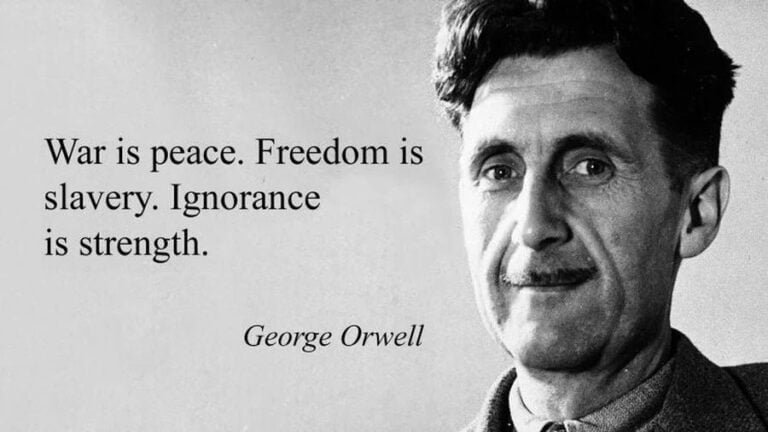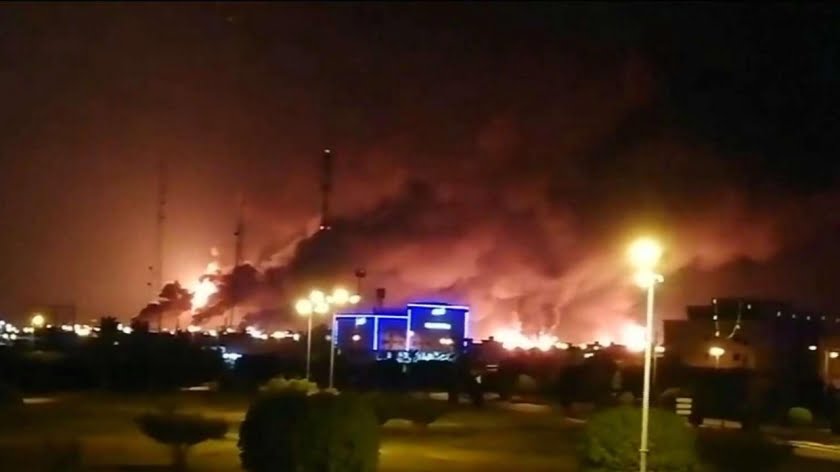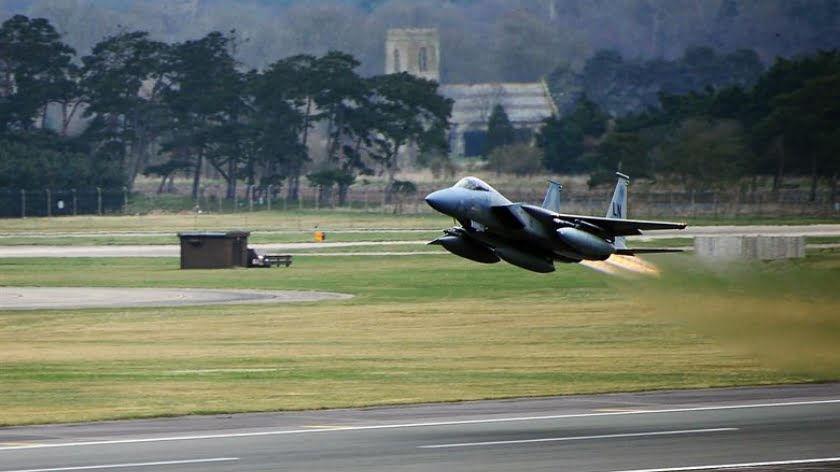Russia’s Military Operation in Syria: What It Accomplished in One Year
Russian forces have been operating in Syria for a year. The operation began on September 30, 2015, at the request of the Syrian President Bashar al-Assad.
On this date, the Russia’s Federation Council (the upper house of parliament) gave the country’s president its consent to use the military in Syria. The Russian Aerospace Forces, deployed to the Khmeimim air base in the province of Latakia, delivered first airstrikes against terrorists without delay.
«The best way to fight international terrorists… is to act preemptively, to fight and eliminate militants in the areas they have already occupied without waiting for them to enter our home», Russian President Vladimir Putin explained Russia’s involvement in a nationally televised address the day after the operation began.
Russia planned, executed and sustained the campaign masterly overcoming all problems related to logistical issues while supplying forces at great distance from the mainland.
The military deployed dozens of bombers and fighter jets and over 4,000 military personnel. Within weeks, the Russian aviation was conducting up to 75 sorties a day each time hitting designated targets. For comparison, NATO had 180 aircraft deployed in the region that flew only 20 sorties daily. Quite often they came back with full payload without finding targets to strike.
Russia’s capability to maintain a very high sortie rate for a long period of time and the absence of combat and operational losses (except for the Su-24M frontline bomber shot down by the Turkish Air Force) came as, perhaps, the biggest surprise to experts.
Russia used its modern aircraft, such as Su-30SM fighters, Su-34 and Su-24M bombers, Su-25 attack planes and the Mi-8 and Mi-24P helicopters. Strikes have also been delivered from outside Syria by Tu-22M3, Tu-95MS and Tu-160 strategic bombers and missile ships from the Caspian Fleet and submarines from the Black Sea Fleet.
On May 10, 2016, Vladimir Putin said that since the beginning of the operation in Syria the Russian Aerospace Forces had conducted more than 10,000 combat flights and destroyed more than 30,000 Islamic State targets, including 200 objects related to oil production and processing. According to Vladimir Yevseyev, a military expert and deputy director of the Institute of CIS Countries, the total number of combat flights before the ceasefire declaration on Sept. 10 was about 13,000.
Russia has airlifted to Syria 1,000 tons of food, medical supplies and essentials. Marines from the Black Sea Fleet and the 7th Airborne Division guard the base. Russian anti-aircraft systems are also located there; S-400 systems were added after a Su-24 bomber was shot down by Turkey. The Russian engineer corps participated in the demining of Palmyra.
As of October 1, 2016, the death toll was 19, including two civilians
With the air power in focus, the Russia’s military have intensified training and re-equipping of the Syrian army – a crucial factor to determine battlefield gains. Russia has also supplied a range of sophisticated weaponry to Assad’s ground forces — including T-90 tanks that often withstood powerful tank-destroying missiles provided by the US and Saudi Arabia.
One of the special features of the Russian air operation in Syria is a large-scale use of precision-guided air-to-surface weapons. In particular, Russia for the first time used KAB-500S precision-guided bombs with a satellite-aided guidance system, as well as its most advanced aircraft Su-30SM, Su-34 and Su-35S, cruise missiles, precision-guided weapons, and UAVs, and practiced intricate forms of interaction between various forces. Long-range missile strikes have been delivered from surface warships and submarines from the land-locked Caspian and Mediterranean seas.
Russia’s only aircraft carrier Admiral Kuznetsov is now on its way to the region.
The operation in Syria is of paramount importance for Russia’s Aerospace Forces, which have for the first time gained the experience of a broad offensive campaign involving different types of aircraft in coordination with the ground forces and foreign partners (Syria, Iran and Iraq). It has also provided an invaluable opportunity for Russia to assess its military capabilities in operational conditions, including network-centric warfare capability, and test its latest military technology.
The Syrian campaign is the largest engagement of the Russia’s overhauled and reborn military aviation since the war in Afghanistan, and is unparalleled in the history of Russian and Soviet aviation in terms of complexity and intensity of warfare and the remoteness of the area of operations. The test has been passed with flying colors.
The operation has drastically changed the whole situation. At the time Russia got involved in the conflict, the Syrian government was on the defensive losing control over large swathes of the territory. Dozens of warring groups opposed to Damascus operated on Syrian soil while government forces kept losing ground and morale.
The area held by President Assad’s troops had been reduced to territory along Syria’s west and the Mediterranean coast, with several corridors in the central and northern parts of the country. The fall of Damascus would entail the loss of the whole of Syria and eventually Lebanon. Christians, Alawites and other minorities would face the risk of total extermination, with the Islamic State gaining access to vast economic resources.
There were predictions made in the West that the operation would fail to get Russia bogged down in the quagmire. Instead, things have turned out very differently. The Russia’s military activities in Syria were a surprising game-changer. For Moscow, it has resulted in a success on several levels to reverse the momentum in the war.
In November 2015, the Russia-supported Syrian forces ousted Islamic State forces from the key Kuwairis airbase in eastern Aleppo province – the first significant defeat the terrorist group suffered since the Russian operation started.
In late 2015-early 2016, the Syrian army made territorial gains in various parts of the country Syria. The government control was established over the entire Latakia province.
In late March, the historic city of Palmyra and several other strategic towns were liberated from IS militants.
In September, the Syrian troops started their advance to recapture Aleppo – the second largest city of the country with Russia providing air cover. With the terrorist forces cut off from supply routes, the liberation of the city is a matter of time now.
Today, the Syria’s army is on offensive in many locations, including the provinces of Hama and Homs.
There have been diplomatic consequences. Russia’s active military presence in the region has reshaped its relationships with Israel, Iran, Turkey, Jordan, Iraq and many other states. Israel and Russia have developed a significant level of understanding maintaining political and military contacts. Both sides reached appropriate agreements to prevent possible incidents.
The operation has made reconciliation possible. A strong balance of forces arose in Syria to give an impulse to the UN-supported process of peacemaking in Geneva.
The United States was compelled to revise its own approach and pursue an effort to develop some kind of partnership with Russia dealing with Moscow as a diplomatic equal. It also had to shift its own stance towards the Assad government. Washington does not insist anymore the government has to go. Despite the present differences over the situation in Aleppo, Russia and the US are maintaining contacts. None of the parties has withdrawn own from the agreement they reached on September 10 to put Syria’s peace process back on track in an ambitious push to end the Syria’s devastating war.
The success of the operation marked Russia’s political comeback to the region and the world stage as a power to be reckoned with. The tide of Syrian war is definitely changing in favor of Russia-supported Syrian forces. Russia’s military capabilities in the region and political clout have grown immensely.
Actually, the Russian Federation has become a leader of a broad coalition of states to include Iran, Iraq and Syria. It is coordinating activities with Turkey and Jordan. Today Russia, not America, is the decisive force in the Syrian war. Evidently, Moscow has taken control of the battlefield and negotiating table to become the gatekeeper to a negotiated solution to the conflict. The time is propitious for the US-led coalition to join together with Russia in the fight against the common enemy.
Source: strategic-culture.org







